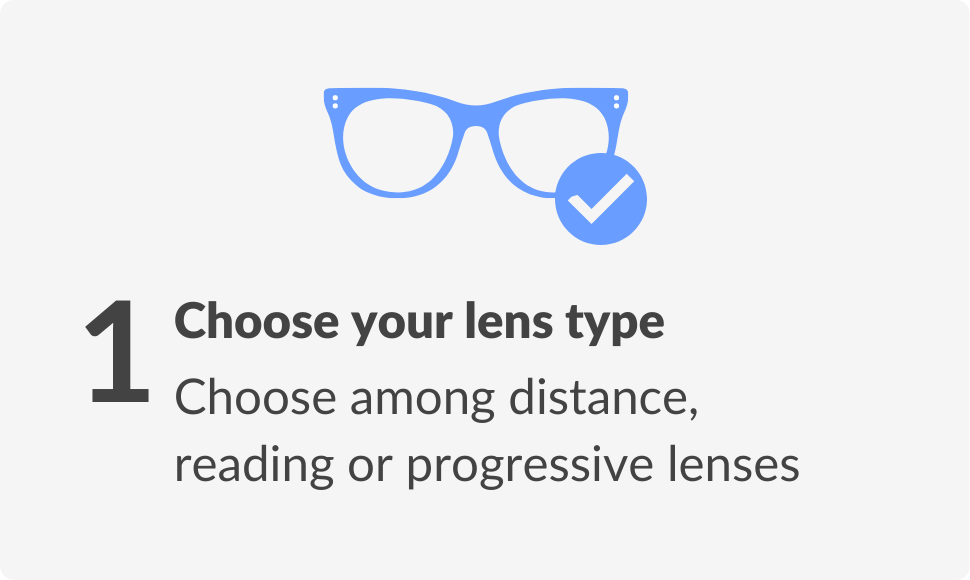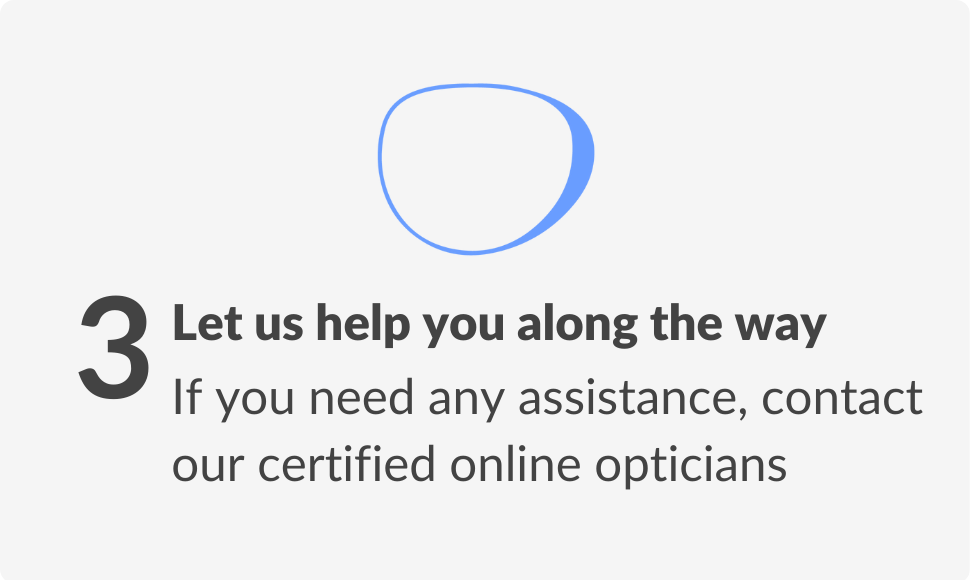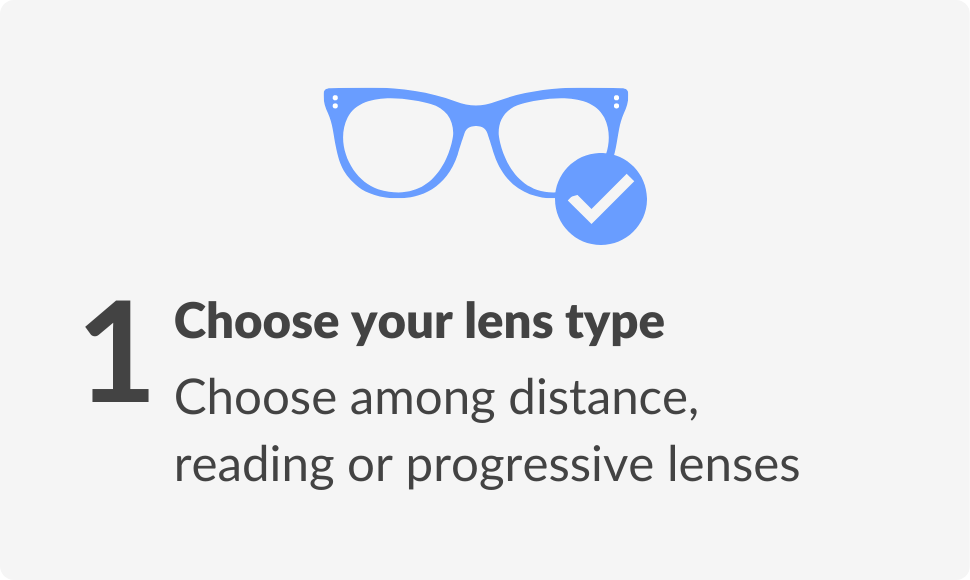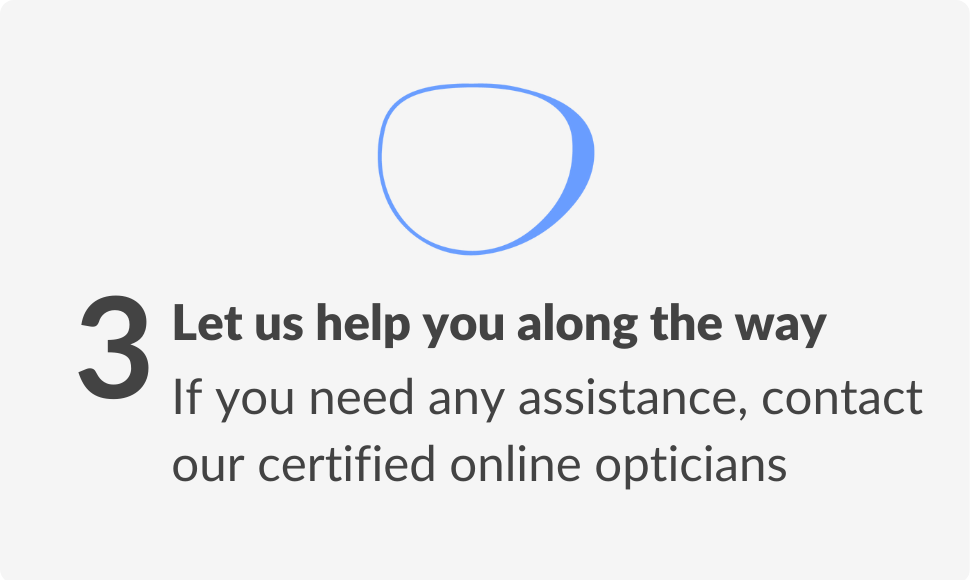
How to Read Your
Eye Prescription
Understand your vision needs

How to Read
Your
Eye
Prescription
Your eye prescription explained
The higher the number, the poorer the eyesight. A plus (+) in front of the number means you are farsighted (hyperopia),
and a minus (-) means you are nearsighted (myopia).
Your eye prescription explained
In your eye prescription, you will see numbers under different abbreviations. The higher the number, the poorer the eyesight.
A plus (+) in front of the number means you are farsighted (hyperopia), and a minus (-) means you are nearsighted (myopia).


Eye prescription chart abbreviations
The OD and OS on your prescription stand for left and right eye,
while the values under SPH (sphere) indicate your nearsightedness and/or farsightedness.

Eye prescription chart abbreviations
OD and OS stand for left and right eye, while the values under SPH (sphere) indicate your nearsightedness and/or farsightedness.

CYL and Axis
CYL and Axis (cylinder & axis) indicate astigmatism. CYL indicates the lens power needed to correct it, and Axis the curvature of your cornea.
If CYL and Axis are left empty, it means that there is no astigmatism.
Pupillary Distance
PD (Pupillary Distance) indicates the distance between the centres of your pupils. This value ensures the centre of the lens is in the right place.
Find out your pupillary distance in seconds with our Virtual PD tool.
CYL and Axis
CYL and Axis (cylinder & axis) indicate astigmatism. CYL indicates the lens power needed to correct it and Axis the curvature of your cornea.
If CYL and Axis are left empty, it means that there is no astigmatism.
Pupillary Distance
PD (Pupillary Distance) indicates the distance between the centres of your pupils. This value ensures the centre of the lens is in the right place.
Find out your pupillary distance in seconds with our Virtual PD tool.
Other additional eye chart elements
like prism if you need correction for double vision or ADD values for reading glasses.
Prism and ADD (addition)
Prism is used to correct double vision. It’s indicated with a prism value and a base direction. BU = base up; BD = base down;
BI = base in; BO = base out.
ADD values indicate the additional correction you may require for reading, which is used in progressives, reading glasses or multifocal glasses.

Other additional eye chart elements
Depending on your vision needs, you may see other elements on your prescription like prism if you need correction for double vision or ADD values for reading glasses.

Prism and ADD (addition)
Prism is used to correct double vision. It’s indicated with a prism value and a base direction. BU = base up; BD = base down;
BI = base in; BO = base out.
ADD values indicate the additional correction you may require for reading, which is used in progressives, reading glasses, or multifocal glasses.
How to order your prescription glasses



How to order your prescription glasses



Contact lens prescription
Glasses and contact lens prescriptions look different because glasses are positioned +/- 12 mm from your eyes, whereas contact lenses sit directly on them. Make sure to use the correct prescription when buying contact lenses.

Contacts prescriptions also have base curve and diameter values, which determine the fit of your contact lens. The brand and type of lens are also included.

Contact lens prescription
Glasses and contact lens prescriptions look different because glasses are positioned +/- 12 mm from your eyes, whereas contact lenses sit directly on them. Make sure to use the correct prescription when buying contact lenses.
Contacts prescriptions also have base curve and diameter values, which determine the fit of your contact lens. The brand and type of lens are also included.

Speak to a certified optician
Got questions about eye care? We’re here to help.
For guidance you can trust, ask our in-house opticians.

Speak to a
certified optician
Got questions about eye care?
We’re here to help. For guidance you can trust, ask our in-house opticians.
FAQs
Your eye prescription can seem difficult to read at first, but with some guidance, you’ll see it’s actually quite easy! Check out our Optical Centre article on How to Read Your Eye Prescription for an even more detailed explanation of all the abbreviations on your prescription chart.
Addition (ADD): This value is relevant for individuals who require a different prescription for reading or close-up work. It signifies the additional lens power, in diopters, needed for near vision.
Eye prescriptions have different expiries depending on the person's medical history, but they are generally between 1 to 2 years. Your optometrist should include the date of issue and expiration on your prescription. We recommend always checking your country’s laws regarding eye prescriptions and contacting your optician for regular check-ups.
Prism is prescribed to correct double vision or other binocular vision difficulties. Not all prescriptions do not contact prism details. When they do, the optician will include the direction for the position of the prism “base.” Learn more about how prism lenses work in our Optical Centre.




































